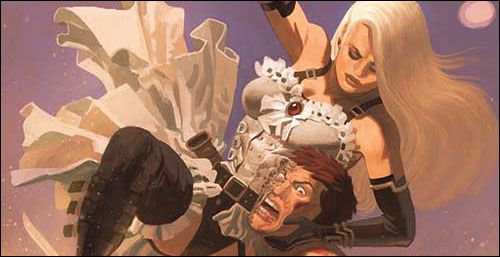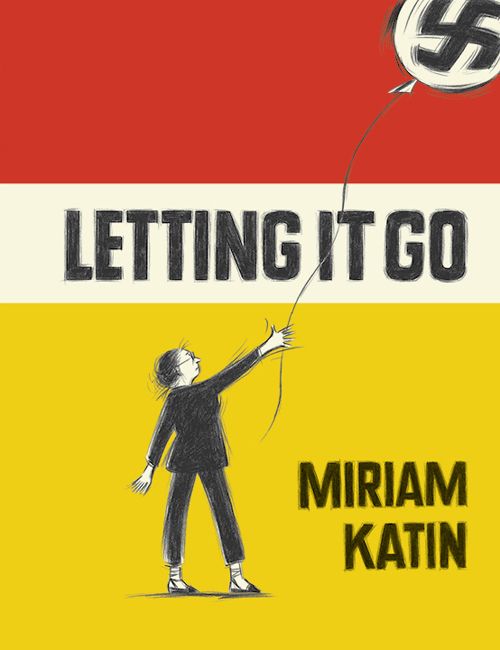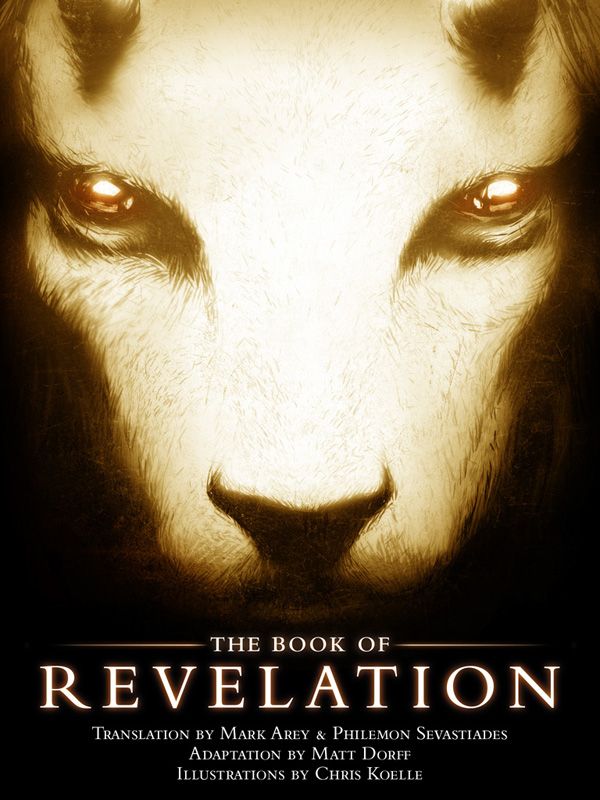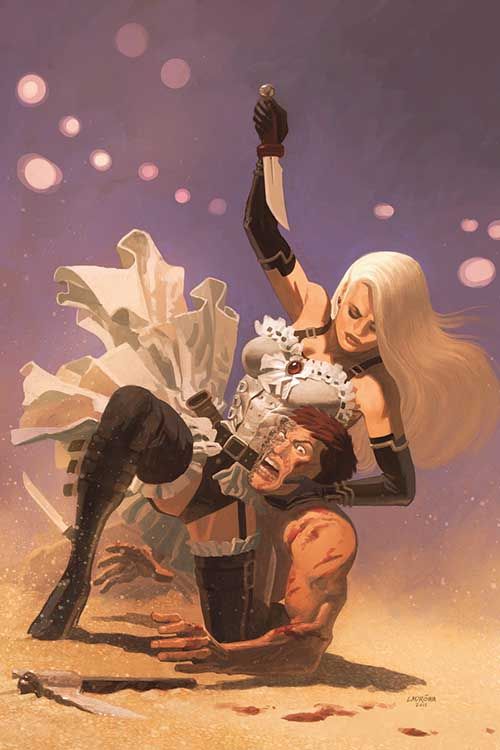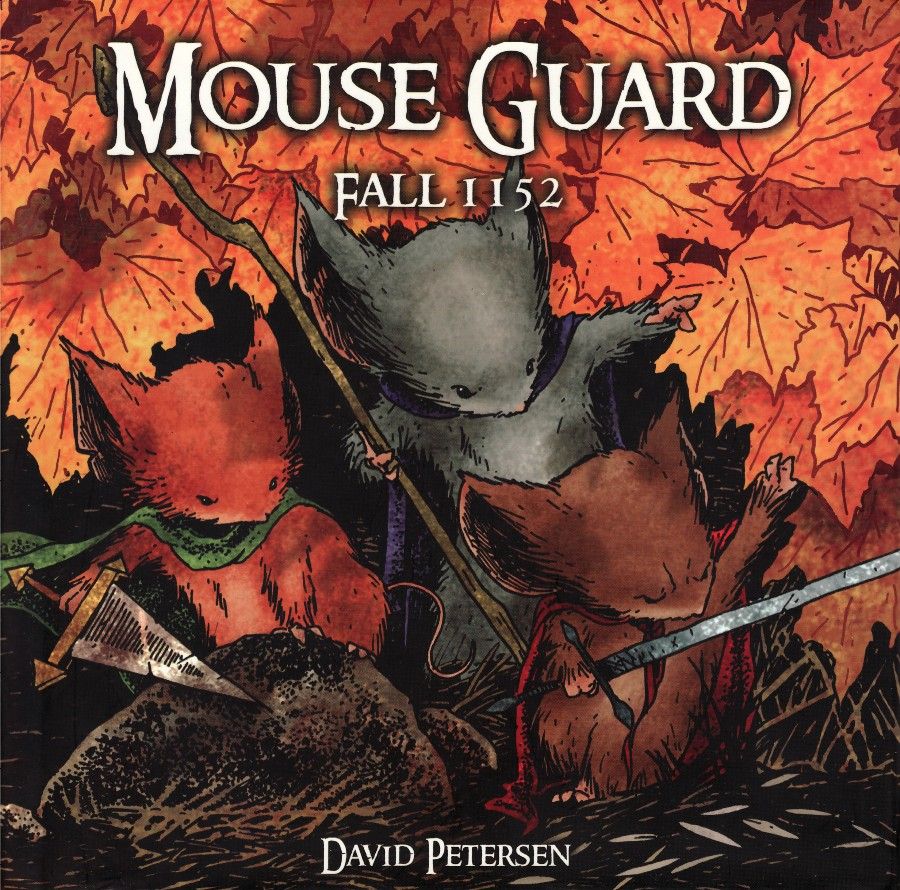Hello and welcome to What Are You Reading?, our weekly look at all the comics and other stuff we've been reading lately. Our special guests today are Brendan Tobin and Pedro Delgado, who run the March MODOK Madness site. And with this being March, the madness is in full swing, so head over there to check out a lot of fun art featuring everyone's favorite big-headed villain.
To see what Brendan, Pedro and the Robot 6 crew have been reading, click below.
*****
Tim O'Shea
Batman Incorporated #8: There are moments in Grant Morrison’s career where I doubt fans’ unceasing love for his work. Then there are moments where I wish he was writing the whole damn DC universe. It is the latter Morrison reaction I am having this time. In this true “Death in the Family” moment (that was a hell of a sneak on the part of DC editorial, no major character death in the actual “Death in the Family” storyline and then whammo in this one issue of Batman Inc.), Morrison reveals an affection for relationships. When he first introduced Damian to the Batworld, he was an unlikeable kid—now of course readers are attached to him. Maybe it’s not Morrison’s affection, it’s his ability to elicit/instill that affection for his characters and their connections. There are a couple of great moments between Alfred and Damian in this issue, as well as Dick (who Damian called Richard) Grayson and Damian. Curious to see where Morrison goes from here.
Venom #32: Artist Declan Shalvey is perfect for giving this book the horror/adventure vibe it needs. But unlike some artists, who are great at the action and horror scenes, Shalvey can also deliver on the “hero sitting in a room lost in his own thoughts” scenes. It is just as important to deliver on the mundane (necessary for the flow of a good story) moments just as well as the intense scenes. One complaint about this issue, which as every monthly is, was rushing to meet its deadline. Colorist Lee Loughridge was unable to stay consistent on the coloring of clothing for the three hostages that play a role in this issue. Here’s hoping that it at least is corrected for the trade. I know it is a nitpicky moment, but it was noticeable enough on my first read of the issue that it distracted me from the actual storytelling. Given the consistently great job Loughridge delivers in comics (yet, of course, I have never commented on before, sorry Lee!), I have to add that he does a stellar job throughout the rest of this issue, particularly the horror scenes.
Winter Soldier #16: I love writer Jason Latour’s appreciation for Marvel’s past that gets snuck into elements of this book. If he did not concoct the reference to the “Steranko class satellite” referenced by one character in this issue, I still credit him for working in such a reference. In the same scene he has a “retired” Nick Fury (please, he will never truly retire) fishing off a pier ... for sharks. Nic Klein and Latour definitely give people their money’s worth, in terms of action. In one two-page fight sequence, Klein draws a staggering 21 panels jammed full of action.
Red She-Hulk #63: How much do I love this series? Let me count the ways: Francesco Francavilla delivering what may be (it is early in the year) my favorite cover of 2013 (including a crossword style redesign of the Red She-Hulk logo); Jeff Parker writing a TV debate show on super powers called (of course) The Power Players; and last but not least, Aaron (Machine Man) clearly relishing life on the run with Betty Ross—and actually smiling.
Brigid Alverson
Miriam Katin's Letting It Go is an unsparingly honest graphic novel that has real warmth to it even as it chronicles some unpleasant times in her life. Katin was born in Hungary during World War II, and she chronicled her family's experiences in her first graphic novel, We Are On Our Own, which I now desperately want to read. In Letting It Go, she has to deal with her grown son's decision to live in Berlin, which is not only far away from her New York home but also a place with terrible associations for her because of the Holocaust. Katin's story unfolds in a series of scenes of her at the drawing table and in the kitchen of her New York apartment, visiting various sites in Europe, and discussing her feelings about Germany with her mother and the rest of the family. She paces it nicely, and throughout the book you can feel her poised on the knife edge, torn between the strength of her emotions about the Nazis and the calm assurances from everyone around her that times have changed and Berlin is a different place now. The ending is satisfying and funny, and not at all facile; it's clear that Katin's truce with Berlin is an uneasy one, but it's a relationship she will be forced to continue working on.
Pepita: Inoue meets Gaudi, records Takehiko Inoue's visit to Spain to see the works of the Catalan architect Antoni Gaudi, as well as the places he lived and the landscapes that inspired him. Illustrated with a combination of photos, drawings, and drawings-on-photos, the book records not just Gaudi's work but Inoue's responses to it. The text is a bit confusing, as it's hard to tell who's talking some of the time, and Inoue's initial set of drawings of Gaudi and his family are presented without explanations, so you don't realize who they are until later. Still, this is a beautifully produced book, and Inoue, the creator of Vagabond, Real, and Slam Dunk, is a masterful artist, so the combination of his art and Gaudi's life and work makes for a fascinating visual meditation.
Chris Mautner
It's been awhile since I've participated, so I'm going to go over stuff I've read over the past month or so rather than just this week:
The Book of Revelation, adapted by Matt Dorff and Chris Koelle. Revelation is one of the strangest, most visually imaginative books of the Bible, which makes this sadly literal, rather dull and obvious adaptation all the more depressing. Surely they could have at least chosen a wider color palette than the dull gold and bronze that dominates the entire book. And, while I'm ranting, I should note that the artist, Chris Koelle, is listed as an "illustrator," which is a more than a little offensive considering he had more to do with conveying the story than writer Dorff did. It's certainly not very Christian-like behavior.
Gay Genius, edited by Annie Murphy -- This is an anthology from Sparkplug Books focusing on stories from gay and transgendered people. Like many anthologies centered around a particular theme, it's a rather dull affair, with most contributors seeming to think the subject matter alone (mostly dealing with lost friends, relationships or identity) is enough to propel the story forward, when it's frequently not. It's not all bad: Edie Fake is always worth checking out, and editor Murphy tells a great story about a 19th century cross-dresser known as Babe Bean, but by and large this is a sadly lackluster affair.
99 Days by Matteo Casali and Kristian Donaldson -- Unless I'm greatly mistaken (and I may well be) this is the final entry in Vertigo's failed crime line. It's about a cop who's trying to find the culprit behind a series of grisly machete murders. Making things more difficult is the fact that said cop is a refugee from Rwanda who has some rather ugly repressed memories involving machetes. Like most of Vertigo's crime books it's a rather mediocre affair, decent enough that you don't want to trash it but not inspired or thoughtful enough to pull it out of the genre blandness it's mired in. If you're really interested in reading a comic about Rwanda, I highly recommend checking out Deogratias from First Second instead.
The Homeland Directive by Robert Venditti and Mike Huddleston -- Nice art. Really nice use of color. Rather staid and uninteresting genre story about government conspiracies and killer viruses. Pass.
Brendan Tobin
The amount of books I pick up varies from week to week and this past one was a small haul. There's a handful of books I enjoy reading every month, though.
From DC, I follow Gray/Palmiotti/Moritat's efforts on All-Star Western, featuring Jonah Hex. I've been a Hex fan forever and the writers' first series was an amazing book. All-Star continues this tradition and I enjoy the odd couple pairing with Amadeus Arkham and the perils offered by 19th century Gotham. However, I do miss the smaller story arcs, done-in-ones, and Hex's nomadic wandering in the old West. I hope they return some of that if and when they wrap up Jonah's Gotham adventures.
The Marvel NOW! books have piqued my interest. I was concerned when Hickman's Fantastic Four/FF runs came to an end, but the titles appear to be in the very capable hands of Fraction/Bagley/Allred. The main team's title has the original team exploring different universes to find a cure for Mr. Fantastic's molecular breakdown, a fact he has kept from his family. The adventure is reminiscent of Byrne's run in the 1980s, specifically the arc where they spent time exploring the Negative Zone. FF stars the replacement team and the kids of the Future Foundation here on Earth and is a bit lighter in tone. Allred's clean, indie style is a pleasure to see month after month and serves the book well. Last week's story, wherein the Moloids recruit Bentley to disrupt She-Hulk and Wyatt Wingfoot's date, was a breath of fresh air when most comics deal out the grim and grit monthly. Speaking of surrounded by grim and gritty, Mark Waid's Daredevil is a great read, and I love Waid's mission to return the character back to Silver Age basics, while keeping a contemporary maturity.
Over at Image, Brandon Graham creates an interesting character out of Liefeld's Prophet. The book has a rambling, free-flowing feel to it and that, along with art from the likes of Simon Roy, give the title a very European comic feel. Dark Horse publishes Francovilla's Black Beetle, bringing back the pulp genre in the first two issues with beautiful, inky artwork and solid mystery writing. I recently bought Fantagraphics' reprinting of Basil Wolverton's Spacehawk, which looks great in this oversized collection. Also picked up the second book of Paul Karasik's selection of Fletcher Hanks' Stardust, Phantomah, etc. stories.
On the web, I've recently discovered the work of Michael Kupperman and Justin Pierce's The Non-Adventures of Wonderella, which is wonderfully insane.
Pedro Delgado
Lately, when I'm not drawing or sketching stuff, I find myself revisiting books that I already have on hand and wish to enjoy again. Most recently I finished re-reading David Petersen's Mouse Guard 1152 Fall &1152 Winter. The books each contain six chapters in a linear plot format following various Guardmice on they're adventures. The pages are downright cinematic in scope with wonderful earthen colors and textures. Having a story based around a society of mice could've certainly taken a light-hearted approach. However, the design is handled with a degree of realism that makes the mice emotionally gigantic while intensifying the many dangers they face. The heroic mice in the story encounter crustaceans, chiroptera, serpents and other perils, which are dramatically portrayed with great low and high angle compositions to get the most out of the action. Paired with this visual storytelling is the construct of a world that I could easily dive into for another dozen books. Beyond that I'm planning on re-reading the MouseGuard The Legends of the Guard companion book, which plays like an anthology of tales from within a cozy tavern. Petersen gathered a group of fellow artists and let them build short narratives (stories and artwork alike) within the confines of his world of mice. I like this idea quite a bit, because it lets me sample lots of visual styles and narrative ideas in small episodic doses and makes for enjoyable book breaks where I can read a chapter and step away. Probably back to the drawing table for a bit.
Among other books that I have on hand, I'll definitely go through my copies of Blacksad again. I thoroughly enjoy the Noir period stories of Juan Diaz Canales alongside the jaw-droppingly gorgeous drawings and paints of Juanjo Guarnido. That man can draw like nobody's business. Beyond that I have a copy E.C. Segar's Popeye Vol. 4 Plunder Island that I'm gonna dig into soon, and I'll see about getting the third volume of the Walking Dead when my finances permit.
Outside of revisiting books I already own, I tend to draw a lot. Graphic novels are kinda expensive and my space is limited. So, to supplement my reading, I've taken to borrowing stuff from a small section in the back of my local library. Most of it is anthologies or hardbound versions, but I've really enjoyed exploring what they've had to offer. It has me reading things I wouldn't normally and some stuff that I wish I'd read sooner. Beasts of Burden: Animal Rites (fantastically illustrated by Jill Thompson) , Orcs: Forged for War, Identity Crisis (which I finished and Immediately read a second time), and David B's Epileptic all come to mind as books I've really enjoyed over the past few months.
In fact, I just recently stopped by my library and nabbed two books to work through before March ends. First, I picked up Alison Bechdel's Invasion of the Dykes to Watch Out For because I really enjoyed her work on Fun Home: A Family Tragicomic, which I'd read a few months back. It had fantastic artwork and a somber story about death and everyday people dealing with their lives, families and problems. This also led me to check out Gilbert Hernandez's Palomar The Heartbreak Soup Stories, which at a glance looks like it is a hefty 500+ pages. Filled with rough black and white images that also seem to be about people dealing with everyday life. Which I personally think yields the best stories and character development. So I'm eager to dive into that in the next couple of days.

